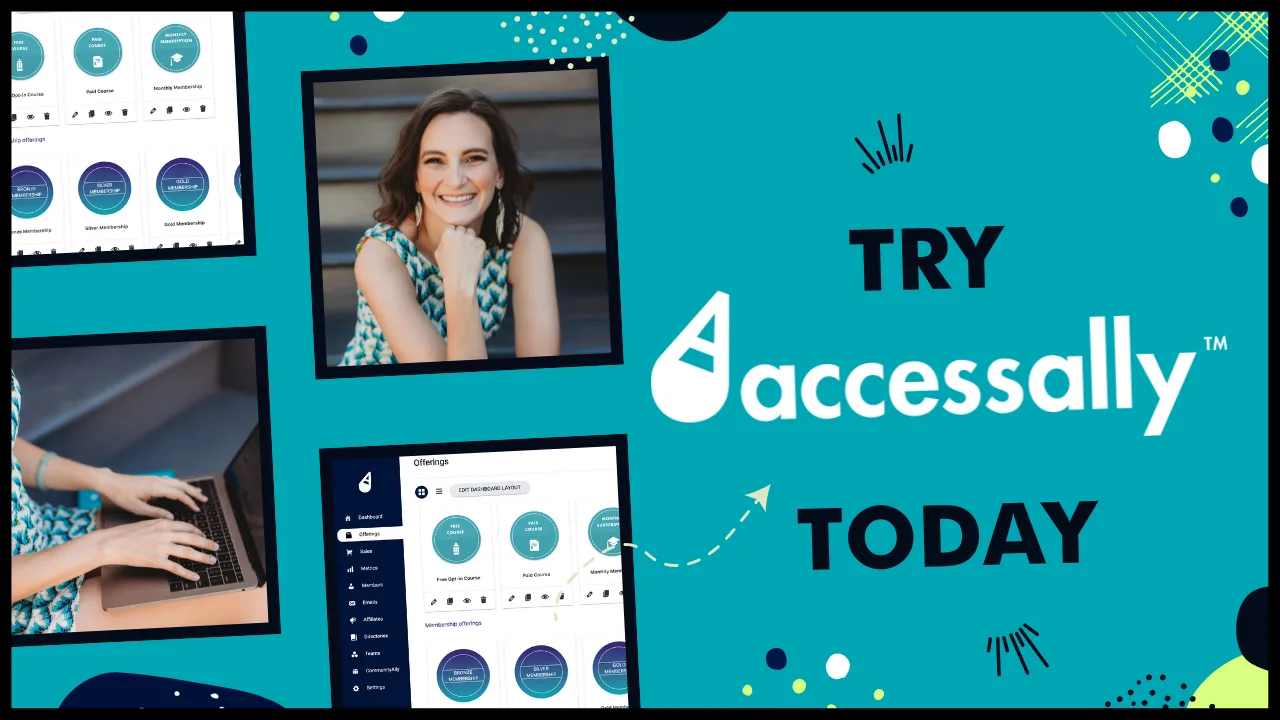Introduction and Overview: Creating Truly Engaging Online Courses
Let’s talk about something that keeps many course creators up at night – student engagement. We’ve all been there: you pour your heart into creating an amazing course, only to see completion rates hover around 15% or students slowly drift away. But here’s the exciting part: with the right approach to course delivery, you can transform those statistics and create an experience your students won’t want to leave.
The beauty of optimizing course delivery lies in how it can completely revolutionize the learning experience. When you thoughtfully design your content delivery strategy, you’re not just sharing information – you’re creating an immersive journey that keeps students coming back for more. This isn’t about fancy tech or complicated systems; it’s about understanding how people learn best and adapting your approach accordingly.
Recent studies have shown that interactive elements can increase course completion rates by up to 60%. This isn’t surprising when you consider how our brains are wired for active participation rather than passive consumption. The most successful online courses aren’t just information dumps – they’re carefully crafted experiences that blend content, interaction, and practical application.
In the rapidly evolving world of online education, staying current with emerging eLearning trends is crucial for course creators who want to maintain high engagement levels. Whether you’re teaching business skills, creative arts, or personal development, the principles of engaging course delivery remain consistent. The key is finding the right balance between structure and flexibility, challenge and support.
As we explore these optimization strategies, I’ll share practical techniques I’ve seen work wonders in real courses, drawing from both my experience and insights from leading education platforms like Circle’s community of course creators. Together, we’ll discover how to create learning experiences that don’t just inform, but truly transform.
Foundation Concepts and Planning
The beauty of creating an engaging online course starts with rock-solid planning and a clear understanding of your core concepts. Before diving into fancy features or complex automation, let’s focus on building a foundation that sets both you and your students up for success.
Start by deeply understanding your target audience’s learning preferences. Are they busy professionals who need bite-sized content? Or perhaps they’re creative entrepreneurs who thrive on visual learning? This fundamental insight will shape every decision you make about your course delivery. For instance, if you’re teaching busy executives, breaking your content into microlearning modules might be your best approach.
Your course structure should mirror your students’ natural learning progression. Think about creating a journey that builds momentum, starting with quick wins that boost confidence before tackling more challenging concepts. Map out your content in a way that maintains energy and enthusiasm throughout the learning experience.
Consider implementing regular knowledge checkpoints and interactive elements. These aren’t just assessment tools; they’re engagement boosters that help students stay connected with the material. You might include short quizzes, reflection prompts, or practical exercises that students can complete in their real-world environment.


Community integration is another crucial foundation element. According to the latest research shared on the Circle Blog, courses with active community components show significantly higher completion rates. Consider how you’ll weave social learning into your course structure through discussion prompts, peer reviews, or collaborative projects.
Pay special attention to your content delivery rhythm. Just like a great workout program, your course should alternate between high-intensity learning segments and reflection periods. This pacing helps prevent information overload while maintaining steady engagement.
Remember, technology should serve your teaching goals, not dictate them. Choose tools and features that enhance your teaching style and support your students’ learning journey. The most effective courses aren’t necessarily the ones with the most bells and whistles – they’re the ones that maintain a clear focus on student success while delivering content in an accessible, engaging way.
Step-by-Step Implementation Guide
The beauty of optimizing your course delivery lies in the systematic approach you can take to enhance student engagement. Let’s walk through a practical implementation process that you can start using today to transform your online courses.
First, begin by auditing your current course structure. Take a close look at your existing content and identify natural breaking points where you can insert interactive elements. This might mean breaking up longer video lectures into 10-15 minute segments or adding quick knowledge checks between key concepts. Remember, shorter, focused learning segments tend to keep students more alert and receptive to new information.
Next, focus on creating clear learning pathways. Your students should always know exactly where they are in their learning journey and what’s coming next. Set up a progressive course map that shows both completed and upcoming modules. This visual roadmap helps maintain momentum and gives students a sense of accomplishment as they move forward.
Third, implement a variety of content delivery methods. Mix up your teaching approach by incorporating different media types – video lessons, written content, audio recordings, and interactive exercises. When planning your content mix, aim for a 70-20-10 split: 70% core content delivery, 20% practical application, and 10% knowledge assessment. This balanced approach keeps your course dynamic and caters to different learning styles.
Now, let’s talk about engagement triggers. Throughout your course, strategically place elements that prompt active participation. This could include timed discussion prompts, peer learning activities, or practical assignments that apply newly learned concepts. Consider incorporating microlearning modules to make complex topics more digestible and actionable.
Don’t forget to build in regular feedback loops. Set up automated check-ins at key points in your course, and create opportunities for students to share their progress and challenges. You might want to check out the Circle Blog for innovative community engagement strategies that can complement your course delivery.
Finally, establish a continuous improvement cycle. Monitor student progress, completion rates, and engagement metrics. Pay special attention to where students tend to slow down or drop off. Use this data to refine your course structure and content delivery methods regularly.
Remember to maintain consistent communication throughout the course. Send encouraging messages at key milestones, provide timely responses to questions, and celebrate student achievements. This personal touch helps create a supportive learning environment where students feel valued and motivated to succeed.
By following these implementation steps systematically, you’ll create a more engaging learning experience that keeps students actively involved and progressing toward their goals. Your course will become not just a collection of content, but a dynamic learning journey that students are excited to complete.
Advanced Strategies and Techniques for Maximum Course Engagement
Let’s dive into some powerful strategies that can transform your online course from good to exceptional. The beauty of modern course delivery lies in our ability to create multi-sensory learning experiences that keep students coming back for more.
First, consider implementing adaptive learning paths that respond to your students’ progress. This means creating branching scenarios where students who grasp concepts quickly can move ahead, while others receive additional support and practice. Using AccessAlly’s quiz features, you can automatically direct students to different content based on their assessment results.
Interactive elements are crucial for maintaining engagement. Rather than just presenting information, create opportunities for students to apply what they’re learning in real-time. This could mean embedding interactive simulations, adding knowledge checks throughout lessons, or incorporating peer discussion components. Breaking content into focused microlearning segments can make complex topics more digestible and boost completion rates.
Community integration is another game-changing approach. Consider creating accountability partnerships or study groups within your course. Leading community platforms make it easy to facilitate these connections, turning passive viewers into active participants who support each other’s learning journey.
Data-driven optimization is essential for continuous improvement. Monitor completion rates, time spent on different modules, and student feedback to identify areas where engagement drops off. Use this information to refine your content and delivery methods. For instance, if you notice students consistently struggling with a particular module, consider restructuring it or adding more supporting materials.
Remember to leverage the power of gamification thoughtfully. Instead of basic point systems, create meaningful challenges that align with learning objectives. This might include progress bars that show mastery of specific skills, achievement badges for completing complex projects, or leaderboards for collaborative activities.
Finally, personalization goes beyond just using students’ names. Create content that adapts to different learning styles by offering multiple ways to engage with the material – text, video, audio, and hands-on exercises. This ensures every student can connect with your content in a way that resonates with their preferred learning method.
Common Challenges and Solutions in Course Delivery
Let’s tackle the elephants in the virtual classroom – those persistent challenges that can make or break your course engagement. The beauty of understanding these hurdles is that once you identify them, you can transform them into opportunities for improvement.
First up is the dreaded content overwhelm. Many course creators fall into the trap of cramming too much information into each lesson. Instead of dumping everything at once, break your content into digestible chunks. Try creating 10-15 minute segments that focus on one specific concept. This approach, known as microlearning, helps students retain information better and maintain their motivation throughout the course.
Another common challenge is the “ghost town” effect – when your course community feels empty and students aren’t interacting. Combat this by establishing clear communication channels and creating structured opportunities for interaction. Set up weekly live Q&A sessions, encourage study partnerships, and create discussion prompts that spark meaningful conversations. The Circle community platform offers excellent features for building these engagement touchpoints.
Technical barriers can also frustrate students and decrease engagement. Consider having a thorough onboarding process that walks students through your course platform. Create short tutorial videos showing how to navigate your course, access resources, and participate in discussions. Remember to provide multiple support options – some students prefer written instructions, while others need visual guidance.
Maintaining consistent engagement throughout the course duration is perhaps the biggest challenge. Combat this by implementing progress tracking, celebrating small wins, and sending personalized check-in messages. Use automation to send encouraging reminders when students complete modules or haven’t logged in for a while.
Remember, these challenges aren’t roadblocks – they’re opportunities to innovate and improve. By addressing them proactively, you’ll create a more engaging learning environment where your students can thrive and achieve their goals.
Best Practices and Optimization
Imagine if your course delivery was so engaging that students couldn’t wait for the next lesson! Let’s dive into some proven optimization strategies that will transform your course from good to exceptional.
First, focus on creating a consistent rhythm in your content delivery. Rather than overwhelming students with too much material at once, break your content into digestible chunks that can be completed in 15-20 minute sessions. This approach, known as microlearning, has shown remarkable results in student retention and completion rates. You can learn more about implementing this effectively in our step-by-step microlearning guide.
Interactive elements should be strategically placed throughout your lessons. Include knowledge checks every 5-7 minutes of content, but make them meaningful – not just token questions. Create scenarios where students apply what they’ve learned to real-world situations. This builds confidence and reinforces learning in a practical way.
Multimedia optimization is crucial for maintaining engagement. Ensure your videos are crisp and professional, but keep them under 6 minutes when possible. Include captions for accessibility and varied learning preferences. Your audio quality matters just as much as video – invest in a good microphone and record in a quiet space.
Building a supportive community around your course can dramatically boost engagement. The experts at Circle’s community platform have found that students who participate in course discussions are three times more likely to complete the program. Consider adding group projects, peer review sessions, or weekly live Q&A sessions to foster connection.
Remember to optimize for mobile users – many students will access your course on their phones. Test your content across different devices and ensure that interactive elements work smoothly on smaller screens. Your navigation should be intuitive, with clear progress indicators and easy access to resources.
Monitor your analytics closely and be ready to adjust based on student behavior patterns. Pay attention to where students typically disengage and strengthen those sections with more interactive elements or clearer explanations.
Case Studies and Examples: Real Success Stories in Course Engagement
Let me share some powerful examples of how course creators have transformed their student engagement through smart delivery optimization. The beauty of learning from real-world cases is that you can adapt these proven strategies to your own courses.
Take Sarah, a business coach who was struggling with completion rates hovering around 30%. After restructuring her flagship program into micro-modules and adding interactive checkpoints, her completion rates soared to 78%. The key was breaking down her 2-hour lectures into 15-minute segments, each followed by a quick implementation exercise. This approach, known as microlearning, has become increasingly effective for maintaining student focus and retention (learn more about creating microlearning courses here).
Another inspiring example comes from Marcus, a photography instructor who revolutionized his course delivery by introducing peer review sessions. Instead of traditional homework submissions, students now upload their weekly assignments to a dedicated community space on Circle, where they receive feedback from both peers and instructors. This social learning component has increased student engagement by 65% and created a thriving community of photographers supporting each other’s growth.
Think about Maria’s language learning program, which struggled with student motivation until she implemented a unique progress tracking system. Students now earn virtual “fluency points” for completing lessons, participating in conversation practice, and helping others. This gamification element turned what was once a solo learning journey into an engaging community experience, resulting in a 40% increase in daily active users.
What’s particularly fascinating about these success stories is how they combine multiple engagement strategies. It’s rarely about implementing just one solution – it’s about creating a holistic learning environment that caters to different learning styles and motivation triggers. The most successful course creators understand that engagement isn’t just about the content; it’s about creating experiences that keep students coming back for more.
Remember, these transformations didn’t happen overnight. Each creator experimented with different approaches, gathered student feedback, and continuously refined their delivery methods until they found the perfect mix for their unique audience.
Future Considerations and Conclusion
As we look ahead in the ever-evolving landscape of online education, staying adaptable and forward-thinking is crucial for maintaining high engagement levels. Imagine if your course could automatically adjust to each student’s learning pace and preferences – well, we’re getting closer to that reality with emerging AI and adaptive learning technologies.
The key to future-proofing your course delivery lies in building flexibility into your core strategy. This means creating content that can easily be updated, repurposed, and delivered across multiple platforms. Consider implementing a hybrid approach that combines self-paced modules with live interaction opportunities, allowing you to pivot as new teaching methodologies emerge.
Data analytics will play an increasingly vital role in optimizing engagement. By tracking student behavior patterns and learning outcomes, you’ll be able to make informed decisions about course improvements. The beauty of digital learning platforms is their ability to provide real-time insights into what’s working and what isn’t.
Looking at current elearning trends, we can expect to see more emphasis on microlearning, gamification, and social learning elements. These approaches aren’t just trendy – they’re proven to boost retention and participation rates. The Circle community platform has shown impressive results in combining course delivery with social engagement features.
Remember to regularly audit your course delivery methods and be willing to experiment with new approaches. Your students will appreciate your commitment to providing the best possible learning experience. Stay connected with your course community, gather feedback consistently, and don’t be afraid to make bold changes when needed.
By focusing on engagement now while keeping an eye on future developments, you’re setting yourself up for long-term success in the online education space. Keep evolving, keep learning, and most importantly, keep believing in the transformative power of engaged learning.



